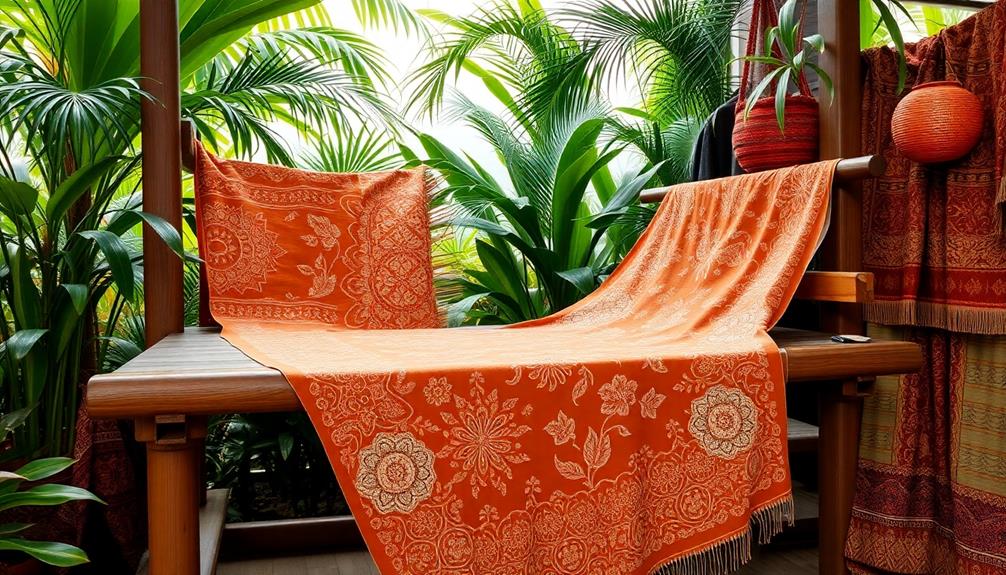If you are looking to save money and contribute to environmental conservation, a good place to start is by making energy-efficient improvements to your home. By insulating your home, you can reduce heating and cooling expenses by up to 20%, and energy-efficient windows can save you around 15% on your bills. Upgrading to energy-efficient appliances could potentially result in annual savings of approximately $300. Installing a smart thermostat can help optimize your heating and cooling systems, potentially saving you between 10-15%. Additionally, investing in renewable energy sources such as solar panels not only decrease energy costs but can also enhance your property’s value. Explore more about these enhancements and their advantages to establish an environmentally friendly home that benefits both your finances and the planet.
Key Takeaways
- Upgrading to energy-efficient appliances can save approximately $300 annually and reduce long-term utility costs while enhancing home comfort.
- Proper insulation and air sealing can cut heating and cooling costs by up to 30%, making homes more energy-efficient.
- Installing low-flow fixtures can reduce water consumption by 50%, saving around $145 yearly and promoting sustainable water use.
- Smart thermostats optimize energy management, potentially saving up to $150 annually by adjusting heating and cooling based on usage patterns.
- Investing in renewable energy sources like solar panels can lower energy bills, increase property value, and provide tax incentives.
Benefits of Energy Efficiency
When you invest in energy-efficient home improvements, you're not just making your living space more comfortable; you're also reaping considerable financial benefits.
By enhancing your home's energy efficiency, you can notably reduce your energy costs. Proper insulation and air sealing can lead to potential savings of up to 30% on heating and cooling expenses, lowering your utility bills right away. Additionally, utilizing renewable energy sources, such as geothermal energy, can further decrease your reliance on traditional energy systems and boost your savings.
Switching to energy-efficient appliances, like compact fluorescent light bulbs, not only helps you reduce your energy use but can save you around $6 annually while lasting much longer than traditional bulbs.
Additionally, implementing low-flow fixtures can cut water consumption by up to 50%, with savings of about $145 per year.
Beyond immediate savings, homes equipped with energy-efficient features often see a price premium upon sale, increasing your property value by approximately $10,400 to $17,000.
These upgrades also contribute to environmental sustainability, reducing reliance on power plants and lowering greenhouse gas emissions.
Cost-Effective Home Upgrades

Cost-effective home upgrades can greatly enhance your living space without breaking the bank. One of the simplest ways to start saving is by installing low-flow fixtures, which can cut water consumption by 50%, potentially saving you up to $145 annually for an investment of just $20 per fixture.
Additionally, incorporating energy-efficient appliances like modern garage door openers can improve home security while also reducing energy costs.
Next, consider upgrading your lighting. Compact fluorescent light bulbs, while pricier upfront, can save you about $6 per year on energy bills and last 4 to 10 times longer than traditional bulbs, making them an energy-efficient choice.
A programmable thermostat is another smart upgrade, allowing you to manage your home's temperature more accurately. This can lead to savings of up to $150 annually, which adds up over time.
Don't overlook the importance of weather stripping to seal air leaks, which can account for 30-40% of your heating and cooling loss. With materials starting at around $5, this small investment translates to significant energy savings.
Enhancing Insulation and Sealing

Improving your home's insulation and sealing can lead to significant savings on your energy bills while keeping your space comfortable year-round.
Effective air purifiers, like those from Levoit models, can also complement your efforts by reducing indoor pollutants that may exacerbate heating and cooling costs.
You can easily tackle some DIY sealing techniques, like applying caulk or using insulating strips, to close those pesky air leaks.
Plus, choosing cost-effective insulation materials can make a big difference in energy efficiency without breaking the bank.
Benefits of Proper Insulation
Proper insulation is a game changer for your home's energy efficiency. By properly insulating your home, you can reduce heating and cooling costs by up to 20%. This is essential, especially since around 90% of American homes are under-insulated, leading to significant energy waste.
In fact, air leaks can account for 25-40% of your heating and cooling energy loss. Additionally, ensuring that your HVAC system is well-maintained can complement your insulation efforts by optimizing energy use and maintaining indoor comfort. Regular inspections and servicing of your HVAC system can help identify potential issues that may affect efficiency, making it a vital aspect of energy conservation importance of HVAC maintenance.
When you invest in enhanced insulation, you're not only lowering your utility bill but also increasing your home comfort year-round. Imagine enjoying consistent temperatures without those annoying drafts.
Plus, retrofitting older homes with better insulation can yield a remarkable return on investment of 107%, proving that insulation upgrades can be financially beneficial.
You don't need to break the bank either; basic rolls of insulation are available for about $15, making it an accessible and cost-effective improvement.
Better insulation not only saves you money but also contributes to improved indoor air quality. So, if you're looking to save money and the planet, prioritizing proper insulation is a smart move that pays off in more ways than one.
DIY Sealing Techniques
Often, homeowners overlook the importance of sealing air leaks, yet it's one of the simplest ways to boost your home's energy efficiency. Addressing these leaks can cut your heating and cooling costs by 10-20%. By investing in DIY projects like weather stripping or caulking, you can greatly reduce energy bills and enhance home comfort.
Here's a quick overview of effective DIY sealing techniques:
| Technique | Cost Estimate | Potential Savings |
|---|---|---|
| Weather Stripping | $20-$25 | 10-20% on costs |
| Caulking | $20-$25 | 10-20% on costs |
| Foam Tube Insulation | $10-$15 | 3-4% on water heating costs |
| Dryer Vent Maintenance | Minimal | Improved efficiency |
Using simple materials like caulk and insulation strips, you can prevent drafts and maintain comfortable indoor temperatures. Don't forget to insulate water lines, too; it's a small investment that pays off by improving hot water delivery efficiency. Regularly checking your dryer vents will also enhance overall home comfort. Taking these steps will make a noticeable impact on your energy efficiency and budget.
Cost-Effective Insulation Materials
When it comes to boosting your home's energy efficiency, choosing cost-effective insulation materials is key. Proper insulation can cut your heating and cooling costs by up to 20%, which directly impacts your energy bill. Basic rolls of insulation start at around $15, making them an accessible option for improving your home insulation.
To enhance your living space's comfort and aesthetics, consider incorporating modern farmhouse decor trends that emphasize natural materials and neutral color palettes.
If your home is older, retrofitting with upgraded insulation is especially beneficial. Did you know that 90% of American homes are under-insulated? This presents a significant opportunity, as attic insulation upgrades can yield a return on investment of 107%.
Don't forget about sealing air leaks, which cause 30-40% of heating and cooling loss. Weather stripping materials start at just $5 and can make a noticeable difference.
Additionally, using duct sealing materials, like metal tape for about $6.99, prevents air loss and optimizes your overall insulation.
Smart Thermostat Advantages

Smart thermostats are a game-changer for energy efficiency in homes. They help you save money by optimizing your heating and cooling schedules based on your usage patterns. By investing around $80 in a smart thermostat, you can expect to see energy savings of 10-15%, which translates to reducing your energy bills by up to $150 annually.
Implementing such energy-efficient solutions not only benefits your budget but also aligns with the importance of quality assurance in software development, as it reflects a methodical approach to managing resources effectively enhances overall software development efficiency.
With features like remote access, you can control your home's temperature from your mobile device, making it easier to manage your energy use even when you're not home. This convenience enhances your energy management and guarantees that you're not wasting energy when you don't need to heat or cool your space.
Moreover, homeowners increasingly prefer properties equipped with smart home technology, and 81% have shown interest in pre-installed devices. Not only will a smart thermostat pay for itself in energy savings within two years, but it also adds value to your home.
Sustainable Water Heating Solutions

Sustainable water heating solutions can drastically reduce your energy bills while minimizing your environmental impact. By making smart choices, you can lower your water heating costs and decrease greenhouse gas emissions. Here are three options to evaluate:
1. Heat Pump Water Heaters: These are 2-3 times more energy-efficient than conventional models and can save a family of four around $350 annually on energy costs.
Additionally, the benefits of diversifying investments can extend to energy-efficient home improvements as they can yield long-term financial savings.
2. Tankless Water Heaters: Enjoy an on-demand supply of hot water that cuts your water heating costs by up to 20%.
Plus, they last 5-10 years longer than traditional tank heaters.
3. Solar Water Heating Systems: Harness renewable energy from the sun to greatly reduce your energy bills.
Many systems qualify for federal and state tax incentives, enhancing your financial savings.
In addition, insulating your water heater can save you between $30 to $70 per year, and simply lowering the temperature to 120 degrees can prevent burns while saving over $400 annually.
Renewable Energy Options

Renewable energy options offer an excellent way to reduce your energy bills and minimize your carbon footprint. By incorporating energy-efficient systems into your home, you can save money while contributing to a sustainable future. Consider these options:
| Renewable Option | Benefits | Potential Savings |
|---|---|---|
| Solar Panels | Generates renewable energy, increases home value | Up to 4% in property value, tax incentives |
| Heat Pump Water Heaters | 2-3 times more efficient than traditional models | Save up to $350 annually |
| Electric Heat Pumps | Lowers operating costs and improves air quality | Uses 1/3 of traditional energy |
| Wind Turbine | Can cover up to 90% of your electricity needs | Significant energy savings in windy areas |
Investing in these renewable energy solutions not only enhances your home's efficiency but also provides eligibility for federal and state tax credits. Additionally, upgrading your washing machines to energy-efficient models complements these changes, further reducing your environmental impact. Embracing renewable energy is a smart choice for both your wallet and the planet!
Market Trends and Buyer Preferences

As you look to improve your home's value, consider the growing demand for sustainable features.
More buyers are prioritizing energy efficiency, and properties with green certifications can command considerably higher prices.
Additionally, aligning your investment strategies, like considering a Gold IRA, can further enhance your financial security while contributing to a sustainable future.
Staying aware of these trends can help you make smart choices that attract potential buyers.
Sustainable Home Demand
There's no denying that energy-efficient homes are becoming increasingly desirable in today's real estate market. With 90% of buyers preferring homes featuring energy efficiency, it's clear that sustainability is a key factor shaping buyer preferences.
As you consider upgrades, keep in mind that homes with energy-efficient features can command a price premium of 4.3-7.1%, adding significant value upon sale. Additionally, just as butter enhances the richness of dishes, energy-efficient improvements can enrich the value of your home.
Proper storage practices for these upgrades will guarantee they last and perform well.
Here are three trends driving the demand for eco-friendly homes:
- Sustainable Certifications: Green-certified homes can sell for 30% more than their non-certified counterparts, making them a smart investment.
- Rising Energy Costs: With energy prices climbing, buyers are prioritizing energy-efficient upgrades to reduce their long-term expenses and environmental impact.
- Increased Awareness of Climate Change: More than 50% of real estate agents report clients are actively looking for sustainable options, reflecting a growing consciousness about eco-friendly living.
Investing in energy-efficient upgrades not only enhances your home's value but also aligns with the shifting priorities of today's buyers in the housing market.
Embrace this trend, and you'll likely find your property stands out in an increasingly competitive landscape.
Energy Efficiency Awareness
Consumer interest in energy efficiency has surged, reshaping the real estate landscape. Nowadays, about 90% of homebuyers prefer homes with energy-efficient features. This shift means that energy-efficient home improvements aren't just good for the planet; they can greatly boost your home's value. For instance, homes equipped with air-source heat pumps can sell for 4.3-7.1% more, translating to an increase of about $10,400-17,000.
Additionally, the growing popularity of minimalist living and sustainability, as seen in the tiny house movement, reflects a broader trend towards energy-conscious choices in housing.
Moreover, over half of real estate agents report that their clients are increasingly interested in sustainability. This trend indicates that buyers are actively seeking properties that minimize energy consumption and environmental impact. ENERGY STAR certified homes, known for their efficiency, can command a premium—often selling for 30% more than non-certified homes.
As awareness of climate change grows, the demand for renewable energy solutions continues to rise. Buyers aren't only looking for energy-efficient features but also for homes that align with their values. By investing in energy-efficient home improvements, you're not only enhancing your living space but also appealing to a market that prioritizes sustainability and efficiency.
Green Certification Value
Green certification has become a considerable driver in today's real estate market, reflecting a shift in buyer preferences towards sustainability.
With around 90% of homebuyers expressing a strong preference for energy-efficient homes, it's clear that eco-friendly features are more than just a trend—they're a necessity.
Homes with green certifications can sell for an average of 30% more than their non-certified counterparts, offering substantial financial benefits.
Consider the following key aspects of green certification:
- Higher Selling Price: Properties with energy-efficient upgrades like air-source heat pumps can command a price premium of 4.3-7.1%, translating to increases of $10,400-17,000 upon sale.
- Increased Buyer Interest: Over half of real estate agents report rising client interest in sustainable features, indicating that buyers are actively seeking eco-friendly homes.
- Enhanced Property Value: Regular energy audits and sustainable practices not only improve home comfort but also considerably boost overall property value.
Frequently Asked Questions
What Are the Examples of Energy Efficiency Improvements?
You can improve energy efficiency by insulating water heaters, installing smart thermostats, replacing incandescent bulbs with LEDs, sealing air leaks, and upgrading to Energy Star ceiling fans. These changes reduce costs and enhance comfort in your home.
Do Energy-Efficient Homes Save Money?
Yes, energy-efficient homes save you money. You'll notice lower utility bills, thanks to upgrades like better insulation and efficient appliances. Over time, your savings add up, making your investment worthwhile and enhancing your home's value.
How Do Energy-Efficient Homes Help the Environment?
Energy-efficient homes help the environment by reducing energy consumption and greenhouse gas emissions. You'll contribute to less reliance on fossil fuels, improve indoor air quality, and support a healthier, more sustainable community for everyone.
What Is the Most Efficient Form of Energy for a Home?
When you think about energy efficiency, you'll find that electricity from renewable sources stands out. It powers your home, lowers your bills, and cuts your carbon footprint, making it the smartest choice for today's homeowners.
Conclusion
By embracing energy-efficient home improvements, you're not just trimming your utility bills; you're also nurturing the planet's well-being. These upgrades allow you to enjoy a cozy haven while subtly whispering your commitment to sustainability. With smart thermostats and renewable energy options, you're making choices that resonate with eco-conscious buyers. Ultimately, you're weaving a tapestry of comfort and responsibility, ensuring your home isn't just a shelter but a sanctuary for future generations. Moreover, incorporating these improvements can enhance the **feng shui home balance**, fostering a harmonious and peaceful environment that positively influences your well-being. Thoughtful placements of devices like smart thermostats can improve both energy flow and efficiency, maximizing comfort and sustainability. In the end, you’re not simply optimizing your living space for today—you’re crafting a future-forward home that aligns functional benefits with holistic living principles.








